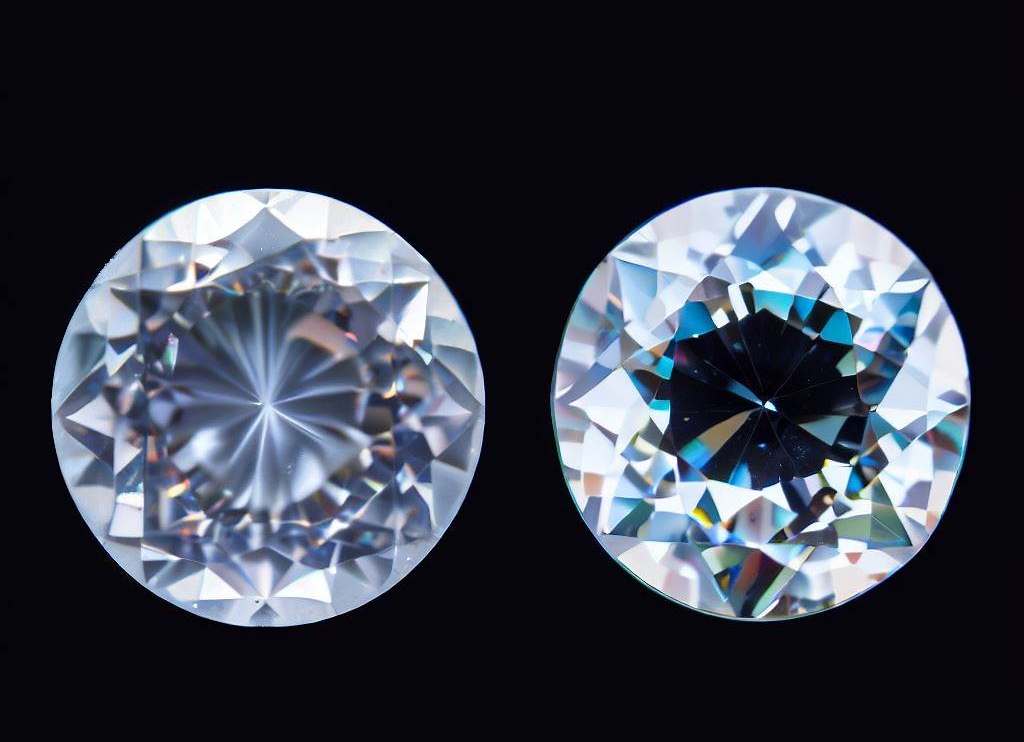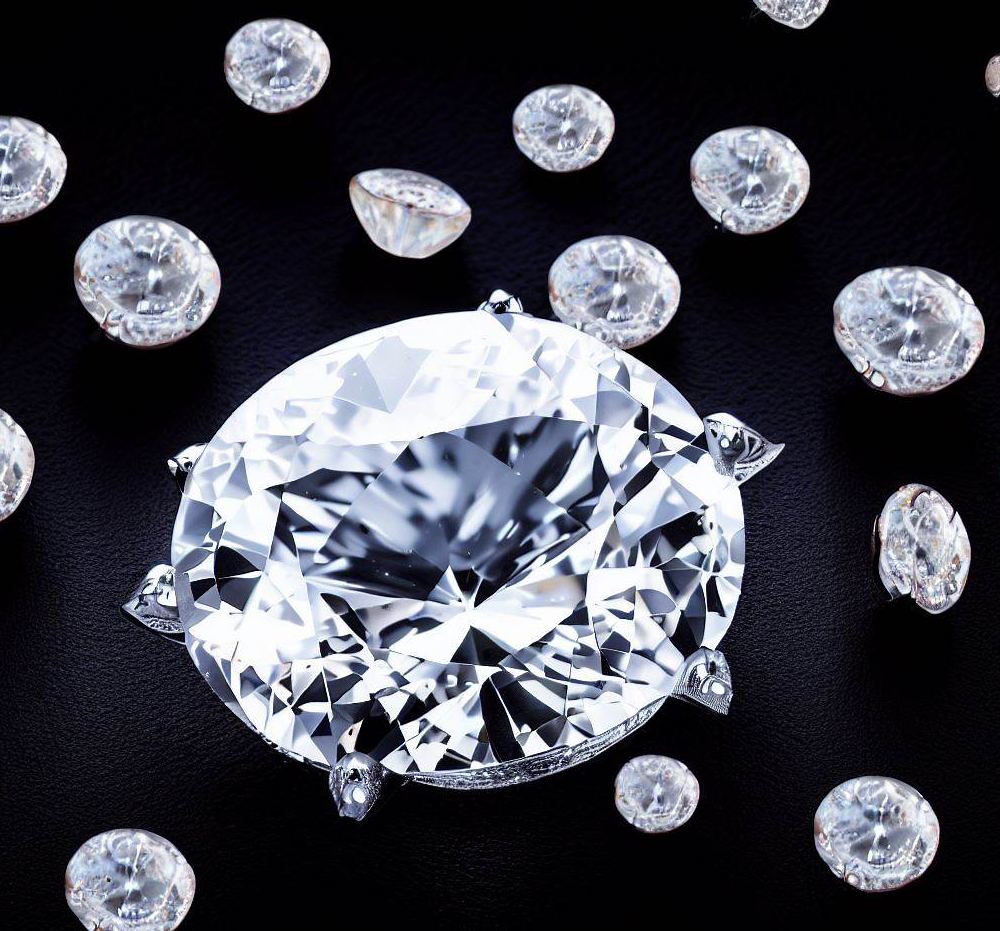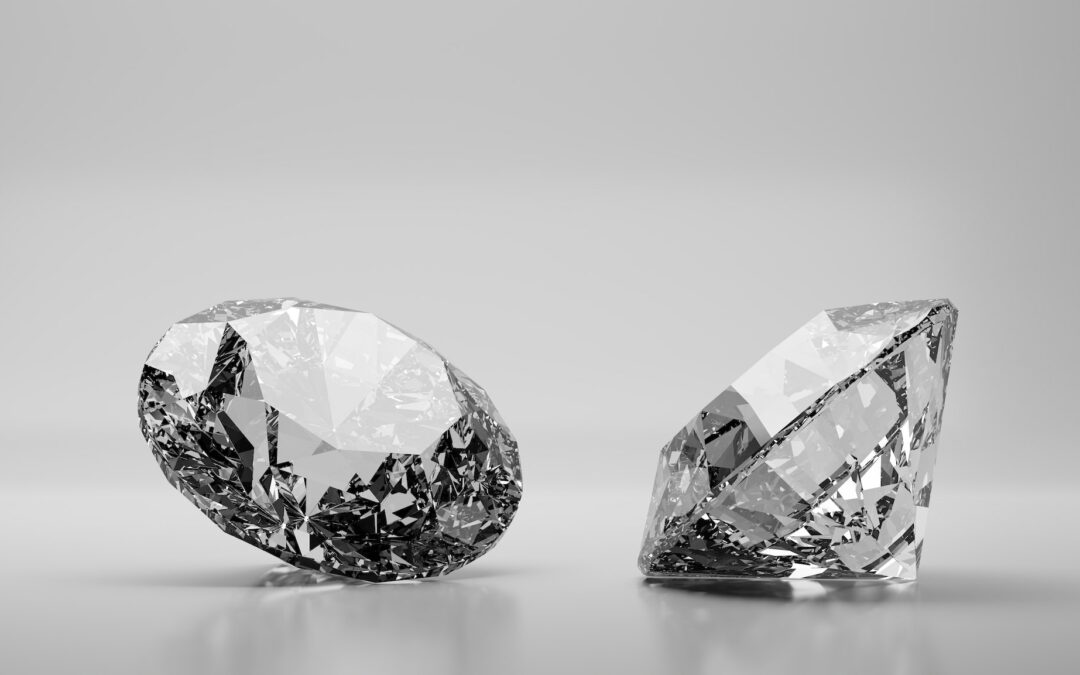Article Contents
Why Diamond Clarity Matters
Diamonds are the ultimate symbol of elegance and sophistication. They represent a timeless beauty that can be passed down through generations, providing an emotional connection between loved ones. As such, selecting a diamond with clarity that accurately reflects its value and prestige is important. When choosing a diamond, it’s crucial to consider the various types of diamond settings to ensure that the stone is displayed in the most flattering way. The setting can enhance the brilliance of the diamond and contribute to its overall appeal. Whether it’s a classic solitaire setting or a more intricate halo setting, each type offers its own unique charm and can further elevate the beauty of the diamond. Thus, understanding the different types of diamond settings is essential in making an informed decision when investing in such a precious and meaningful symbol.
For those who may not be familiar with diamond grading, this guide will provide helpful information on how to evaluate a diamond’s clarity when selecting one for yourself or as a gift for someone special.
Diamonds come in all shapes, sizes and clarity levels, from flawless diamonds that exhibit no blemishes or visible inclusions to lower-grade stones with noticeable flaws. Knowing what to look for when choosing a diamond can help ensure you purchase the perfect stone for your needs and budget.
This beginner’s guide will explain everything you need to know about understanding the nuances of diamond clarity so that you can make an informed decision when buying a beautiful piece of jewellery.
What Is Diamond Clarity?
When it comes to understanding diamond cut quality and choosing the perfect diamond, clarity is an important factor to consider.
Clarity refers to how clear a diamond appears under magnification and can be enhanced through loupe inspection.
Professional jewellers use diamond grading systems to judge just how clear a stone is. It’s worth noting that this process helps us determine the overall quality of a diamond – making sure you get exactly what you’re looking for when investing in one of nature’s most beautiful gifts.

At its core, clarity has everything to do with perfection: no two diamonds are alike, so having an expert eye on your side makes all the difference!
With decades of experience in evaluating diamonds, our team of knowledgeable professionals will help ensure you make the right choice for your needs.
Factors That Affect Clarity
When it comes to diamond clarity, many factors come into play that can influence the pricing of a gemstone. As a professional jeweller, I understand how important it is for clients to assess their jewel’s quality and value accurately.
With this in mind, let’s review some of the most common elements affecting a diamond’s clarity definition.
We must first consider whether there are any natural flaws or inclusions within the stone itself that alter its appearance; these require specialised detection techniques such as microscopes and magnifying lenses.
Additionally, there may be treatments applied to diamonds to improve their beauty or conceal potential blemishes – all of which should be noted when assessing clarity.
Finally, other considerations include external influences such as exposure to heat and chemicals during production, which can further impact the overall aesthetics of a gemstone.
It goes without saying that understanding each factor thoroughly helps us determine not only what affects diamond clarity but also provides invaluable insight when considering pricing considerations for a particular piece. Ultimately, having knowledge about these various components will help you make informed decisions when selecting your perfect diamond!
Diamond Clarity Grading System
Now that we better understand the factors that affect clarity let’s look at how diamonds are graded.
The grading process is done with loupe magnification and microscope examination to identify any inclusions present in the diamond. In addition to this, laser drilling may be used to remove certain blemishes or other treatments, such as filling fractures on the surface of the diamond after mapping out all its inclusions.
All these techniques help us determine each diamond’s clarity level based on its characteristics.
The four grades of diamond clarity range from Flawless (FL) – no visible flaws even under 10x magnification, Internally Flawless (IF) – only minor external imperfections observed, Very Slightly Included (VSI/VS) – small internal inclusions, and Slightly Included (SI1/2) – obvious inclusions when viewed by an experienced grader.
With a bit more knowledge and experience, you will be able to understand the grade of your diamonds and make comparisons when you are buying diamond jewellery.
Popular Clarity Grades
When it comes to diamond clarity, certifications are key. GIA and IGI offer fine-tuned gradings that range from flawless to included. The certified jeweller will use a 10x loupe to examine the stone under magnification and map out any inclusions or blemishes. It is important to note any treatments applied, as clarity can be enhanced with techniques such as laser drilling and fracture filling.
In addition, one should also consider the rarity of certain flaws when making an assessment of quality. For example, some diamonds may have fewer visible imperfections than others but still score lower due to their ‘eye cleanliness’ being less desirable.
With knowledge about these nuances, buyers can be sure they get the best value for their purchase every time!
Buying a diamond involves much more than just assessing its visual appeal – a comprehensive understanding of all aspects of clarity is essential for informed decisions that stand the test of time. Education and experience allow professionals to spot minute details which could easily go unnoticed by someone unfamiliar with gemstone grading systems; this ultimately helps customers make better choices when selecting precious stones for special occasions.
Tips For Buying Clarity Graded Diamonds
Buying a diamond is an important decision, so you must get the clarity-graded stone of your dreams. When considering diamonds for purchase, there are some key points to consider when shopping around and asking questions: First and foremost, it is essential to educate yourself about the 4Cs of diamonds: cut, color, clarity, and carat weight. This will help you understand the quality and value of the diamonds you are considering. Additionally, do your research on reputable jewelers and always ask for a diamond grading report to ensure you are getting what you pay for. These are essential tips for diamond buyers to ensure they make an informed and satisfying purchase.
- Buying Tips – Make sure to ask relevant questions about the quality assurance process used by jewellers when grading diamonds, as well as their pricing considerations.
- Questions to Ask – Are any treatments performed on the stones? What type of certification will come with my purchase? How do I

know that this is an authentic diamond?
Once these elements are taken into consideration, finding the perfect clarity-graded diamond can become easier and more enjoyable!
Conclusion
Diamond clarity is an important factor to consider when buying a diamond. It’s essential to understand the grading system and how factors like inclusions or blemishes can affect the grade of a diamond.
Many shoppers opt for diamonds with higher clarity grades, but it’s important to remember that these stones may be costlier than those with lower grades.
We strive to offer our readers links to quality diamond jewellery at competitive prices. We take great pride in providing comprehensive information about all aspects of diamonds, including their clarity ratings.
With us, you’ll have access to experienced jewellers who will guide you through the process of selecting the perfect stone for your needs and budget.
We encourage you to visit our trusted partners today if you’re ready to find your ideal diamond jewellery! They would love nothing more than to help make your dream piece of jewellery a reality.

